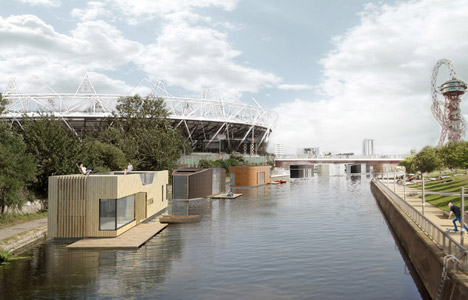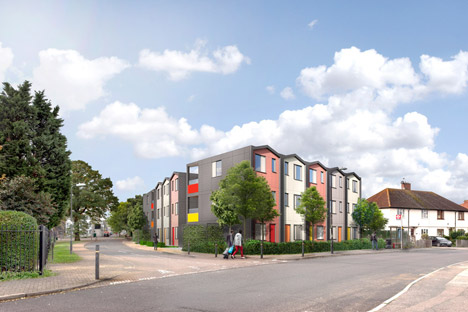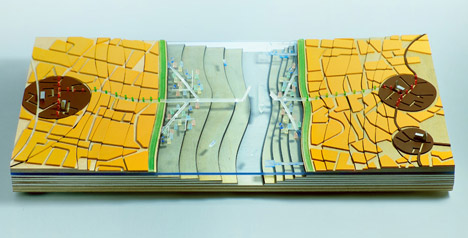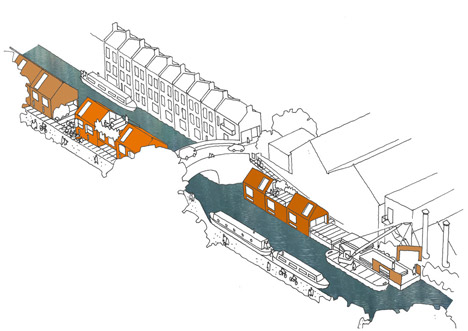Architects propose 100 ideas to solve London's housing crisis
Rogers Stirk Harbour + Partners, Grimshaw, Farrells, and dRMM are among the leading British architects who have contributed designs for a competition aimed at finding solutions to London's housing crisis.

The 100 designs form a longlist for an international design competition 0rganised by think-tank New London Architecture (NLA), that attracted submissions from 16 countries.
Ranging from modular housing to the development of brownfield sites, parasitic architecture and student-style accommodation, each of the schemes aims to provide London with some of the 440,000 new homes needed to extract the capital from its current housing crisis.
While most of the 100 longlisted entries are conceptual, among them is the just-completed Y:Cube by British firm Rogers Stirk Harbour and Partners, a prefabricated housing system costing £30,000-per-unit.

The pilot scheme, developed with British charity YMCA to provide housing for homeless people, opened in south London last week and there are plans to roll out the programme across the UK.
"We've been failing to build enough housing," said Richard Rogers at the opening of the south London development.
"We need to let local authorities build more, to make the most of their land, create the communities that we need and put value back into building more affordable social housing."

Other ideas on the NLA's list include a trio of concepts for floating housing on London's waterways by Mae Architects, dRMM and Baca Architects – designers of the UK's first "amphibious house".
In an article for Dezeen, NLA founder Peter Murray said that London was lacking innovative housing ideas on a par with those developed during the 1960s and 70s.
"The large residential developers deliver standard products in towers or mansion blocks of contemporary design; even the Athlete's Village for the Olympics was a half-hearted simulacrum of the Barcelona grid," said Murray.

"Land and housing prices are such that young professionals are finding it a struggle to live in the capital while those at the bottom of the housing ladder are being forced out of the city altogether," he added.
"We hope to put the spotlight on new thinking by designers, architects and economists who have the potential of making real contributions to this seemingly intractable problem."

RCA graduate Guy Rochez has proposed rooftop dwellings for the capital's exclusive Mayfair district for his entry to the NLA's competition. A similarly parasitic scheme, developed by James Christian for last year's Designers in Residence at London's Design Museum, aims to make use of disused carparks and edge-land and also made the shortlist.
London architecture firm Farrells and Buro Happold engineers presented a proposal to construct low-level bridges over the River Thames in east London to provide 50,000 more homes in the city, as well as additional pedestrian and cycle crossings.

"The shortlist presents a selection of radical ideas from living on the Thames to the creation of a new mega-city," said a statement from the NLA.
"As London debates where to house a growing population, a number of ideas examine how we can increase densities in town centres, around stations, and in the suburbs."

A planning process called Right to Replace was submitted by WikiHouse Foundation co-founder Alastair Parvin and Adam Towle from the Greater London Authoritys Regeneration Team.
The premise of the scheme is to give owners of suburban housing the right to demolish their homes and replace them with more energy-efficient dwellings on the condition that half their existing plot was left vacant to accommodate new housing.
Developer GL Hearn has proposed the construction of a new Mega-city further afield on disused land around London's M25 motorway, while NBBJ drew up plans to replace parts of the city's road network with rows of new housing. The firm also recently unveiled plans to replace London Underground's Circle Line with a 17-mile-long travelator.

Ten shortlisted ideas will be announced in October and invited to participate in a Greater London Authority working group to explore how their ideas could be developed to deliver future housing for the capital.
In a recent interview with Dezeen, interior designer and TV presenter Naomi Cleaver suggested that student-style accommodation for young professionals could be one solution for London's housing problems, prompting a heated debate among Dezeen readers.
"It's between student accommodation and a hotel," Cleaver said. "It solves a number of problems. It's safe and well-designed accommodation at an affordable price, but for rent rather than purchase."
"My perception is that young people are not as absorbed by the need to own property as people of my age. That's a very interesting cultural shift and more of a European perspective," she added.
The 100 projects on the NLA's list will be on show at The Building Centre in London from 15 October to 17 December 2015.